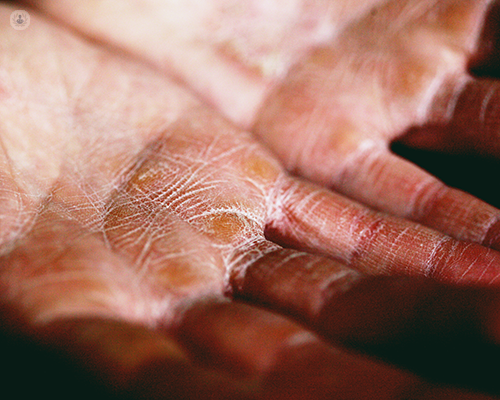Dermatopathology
What is dermatopathology?
Dermatology is the medical specialty that deals with the study, prevention and treatment of the skin and its diseases, as well as dermocosmetic techniques to maintain healthy skin.
Among the areas of study of dermatology is dermatopathology, an area focused on skin exams at the microscopic level. That is, it is based on biopsies to study the characteristics of each patient's skin, integrating their clinical history with the microscopic analysis of their skin pathologies.
By doing this, the dermatologist can interpret all of the information of each case to a very precise level to make a more detailed diagnosis of the illnesses and to apply the most appropriate treatment.

What is a dermatopathologist?
A dermatopathologist is a highly-trained specialist who diagnoses skin disorders under a microscope. They make microscopic observations of the skin's tissues in order to diagnose a skin disease. A dermatopathologist works closely alongside a dermatologist who treats the condition that has been diagnosed.
What are the commonest skin diseases?
Common inflammatory skin diseases include:
- Eczema: A group of skin conditions that cause the skin to go red, dry, and itchy.
- Psoriasis: A skin condition that causes patches of raised, red skin with flaky patches of silvery, dry skin.
- Lichen planus: A non-contagious, itchy rash that can affect the skin, as well as the lining of the mouth.
- Bullous pemphigoid: A blistering skin condition that first develops as a raised, itchy rash and then turns into large blisters.
- Vasculitis: An inflammation of the blood vessels that occurs when the body's immune system mistakenly attacks the blood vessels, limiting blood flow.
Benign and malignant skin diseases include:
- Seborrhoeic keratosis: Benign raised growths that are brown or black in colour.
- Basal cell carcinoma: The most common type of skin cancer. Symptoms appear as marks on the skin, typically including a bump, an area of skin that is very pale, a red patch of skin, or a persistent scar.
- Actinic keratoses: Scaly, dry and rough patches of skin that result from years of sun exposure.
Other common skin diseases may include different types of cysts.



